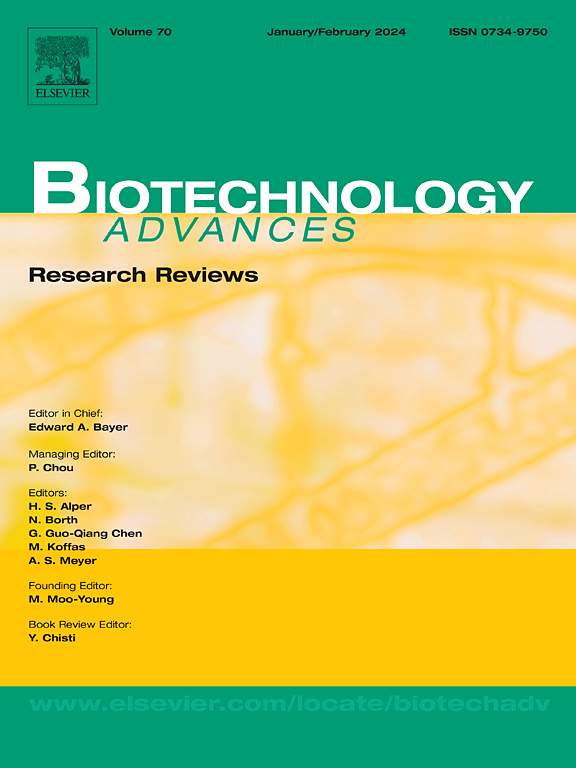生物甲烷化概述和膜技术作为克服 H2 传质限制的候选技术的使用
IF 12.5
1区 工程技术
Q1 BIOTECHNOLOGY & APPLIED MICROBIOLOGY
引用次数: 0
摘要
太阳或风能等可再生能源产生的能源是间歇性的,取决于环境因素。这就是能源供需不匹配的原因所在。在这种情况下,人们对生物甲烷化的兴趣与日俱增,因为它是 "电转气 "概念(P2G)的一个有趣贡献,可将额外生产的电力转化为甲烷(CH4)。绿色氢气(H2)(由电解产生)和二氧化碳(沼气中的污染物)之间的反应可由不同的微生物催化产生生物甲烷,如果达到标准,可注入现有的天然气网。这样,氢气和电力的储能以及运输问题都将得到解决。然而,由于 H2 的溶解度低,H2 扩散到液相进行进一步生物转化是主要瓶颈。本综述包括生物养氢甲烷化(BHM)和膜技术的最新进展。具体而言,综述了使用中空纤维膜生物反应器作为克服 H2 扩散限制的技术。此外,在提出有关 BHM 的主要建议之前,还批判性地讨论了操作条件、微生物学、H2 扩散和 H2 注入方法的影响。本文章由计算机程序翻译,如有差异,请以英文原文为准。

An overview of biomethanation and the use of membrane technologies as a candidate to overcome H2 mass transfer limitations
Energy produced from renewable sources such as sun or wind are intermittent, depending on circumstantial factors. This fact explains why energy supply and demand do not match. In this context, the interest in biomethanation has increased as an interesting contribution to the Power-to-gas concept (P2G), transforming the extra amount of produced electricity into methane (CH4). The reaction between green hydrogen (H2) (produced by electrolysis) and CO2 (pollutant present in biogas) can be catalysed by different microorganisms to produce biomethane, that can be injected into existing natural gas grid if reaching the standards. Thus, energy storage for both hydrogen and electricity, as well as transportation problems would be solved. However, H2 diffusion to the liquid phase for its further biological conversion is the main bottleneck due to the low solubility of H2. This review includes the state-of-the-art in biological hydrogenotrophic methanation (BHM) and membrane-based technologies. Specifically, the use of hollow-fiber membrane bioreactors as a technology to overcome H2 diffusion limitations is reviewed. Furthermore, the influence of operating conditions, microbiology, H2 diffusion and H2 injection methods are critically discussed before setting the main recommendations about BHM.
求助全文
通过发布文献求助,成功后即可免费获取论文全文。
去求助
来源期刊

Biotechnology advances
工程技术-生物工程与应用微生物
CiteScore
25.50
自引率
2.50%
发文量
167
审稿时长
37 days
期刊介绍:
Biotechnology Advances is a comprehensive review journal that covers all aspects of the multidisciplinary field of biotechnology. The journal focuses on biotechnology principles and their applications in various industries, agriculture, medicine, environmental concerns, and regulatory issues. It publishes authoritative articles that highlight current developments and future trends in the field of biotechnology. The journal invites submissions of manuscripts that are relevant and appropriate. It targets a wide audience, including scientists, engineers, students, instructors, researchers, practitioners, managers, governments, and other stakeholders in the field. Additionally, special issues are published based on selected presentations from recent relevant conferences in collaboration with the organizations hosting those conferences.
 求助内容:
求助内容: 应助结果提醒方式:
应助结果提醒方式:


